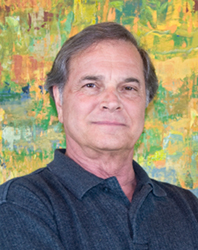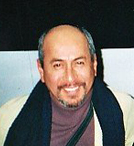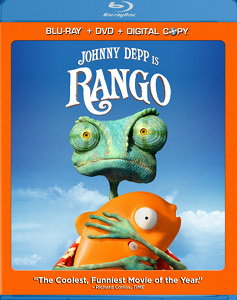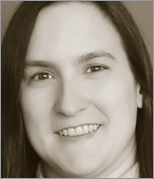Posted by Elena del Valle on July 27, 2011

A scene from La Sangre de los Templarios
Photos: Vme
Next month programming executives at Vme, a 24-hour Spanish language network partnered with public television stations and available in 10 million homes across the country, hope to capture viewers attention with Estelares Vme, five international contemporary miniseries scheduled to air on four consecutive nights, Monday through Thursday at 9 p.m. (ET/PT), each week. Blood of the Templars, The Tunnel, D’artagnian and The Three Musketeers, Pompeii and Karol will air for the first time in the United States on Vme. Blood of the Templars, The Tunnel, and D’artagnian and The Three Musketeers were produced in Germany in the last decade. Karol and Pompeii were produced in Italy in 2007. D’artagnian and The Three Musketeers and Karol are available on the Vme website at cine.vmetv.com/estelaresvme
The first miniseries airs Monday, August 1 through Thursday, August 4, 2011 La Sangre de los Templarios (Blood of the Templars), tells the story of David, a teen raised by monks without knowing the identity of his parents. When a sample of his blood is taken doctors discover he is the genetic heir that unites the two ancient orders of the Priors of Zion and the Knights Templar. El Túnel (The Tunnel), set in East Germany in 1961, is the story of Harry Melchior, who as the Berlin Wall begins construction, decides to escape into West Berlin. Though his sister, Lotte, and her daughter must stay behind, Harry swears he will return to rescue them. Once on the other side, he and his best friend, Matthis, plan an escape mission to free their loved ones. The series will air August 8 through Thursday, August 11, 2011.

A scene from D’Artagnan y los Tres Mosqueteros
D’artagnian and The Three Musketeers is scheduled to air Monday, August 15 through Thursday, August 18, 2011. The series is based on the famous swashbuckling adventure of Athos, Porthos, Aramis and D’artagnian who strive to save the Queen of France from the sinister Cardinal Richelieu and the nefarious sorceress, Milady de Winter.
In Pompeii, scheduled for Monday, August 22 through Thursday, August 25, 2011, a Roman soldier returns to the the famous resort city after a lengthy absence in search of peace and quiet. Instead he finds a conspiracy that threatens the ideals of a just and honest Rome and the emerging Christian movement. His struggles appear doomed to fail until the volcano erupts forcing the citizens of Pompeii to take a good look at what’s really important in life. This series is noted for its special effects and cinematography.

A scene from El Túnel
Finally, Karol, due to air Monday, August 29 through Thursday, September 1, 2011, is a biography about the first man to rise above the Iron Curtain to become pope. The series includes a musical score by Ennio Morricone. Despite an assassination attempt to silence him, John Paul II is said to have helped topple communism, uplift a downtrodden Mexico, aid the destitute and sick in Calcutta and attend to AIDS patients in Africa.
Posted by Elena del Valle on July 25, 2011

Jorge Ramos, David Faitelson and Jose Ramon Fernandez, the E:60 hosts
Photos: ESPN Deportes
A team of eight reporters and hosts plus production staff will be responsible for E:60, the Spanish language sports network’s first news magazine was launched at 6 p.m. ET July 19, 2011. Hosted by José Ramón Fernández, David Faitelson and Jorge Ramos with Fernando Palomo, Fernando Schwartz, Guillermo Celis, Carolina Guillen and Martin Ainstein reporting the program will last one hour. The target audience are Hispanics in the United States. If the show becomes successful in the domestic market producers may expand its reach to Latin America. Scroll down to watch a video in Spanish about the program.
“With E:60, we are adding a new level of investigative reporting to our news, analysis and information programming that we offer to sports fans,” said Rodolfo Martínez, vice president of production, ESPN Deportes & ESPN International. “E:60 is sports news and more for our viewers; the show has in-depth analysis on the world of sports and athletes, as well as the impact that sports has in society.”
E:60 will present a six one-hour weekly editions from July 19 to August 23. E:60 is scheduled to feature stories about boxing, baseball and soccer stars, money and politics as well as profiles on backyard brawling, cockfighting, surfing dogs, supermodel kick boxers, Jamaican dog sledding, and alligator wrestling. The show’s format will feature a main story produced exclusively by ESPN Deportes along with segments previously featured on the English language E:60.

The E:60 team, Fernando Schwartz, Martin Ainstein, David Faitelson, Carolina Guillen, Fernando Palomo, Jose Ramon Fernandez, Jorge Ramos and Guillermo Celis
The program is on ESPNdeportes.com, ESPN Deportes Radio, ESPN Deportes La Revista and ESPN Deportes Movil. The first episode of E:60 includes a segment about the experiences of Latino players in Major League Baseball and their impact in the league. E:60 will give an overview of what players go through to be recognized by coaches and independent trainers, also known as “hustlers,” to achieve success. That show will examine the case of Brazilian soccer idol Bruno Souza, who allegedly planned the gruesome murder of his ex-girlfriend and mother of his child and is awaiting a trial date. Finally, the show will cover what the making of the Larry O’Brien NBA Championship Trophy by Tiffany & Co. the trophy over eight to ten weeks of manufacturing time.
ESPN Deportes offers multimedia sports coverage for U.S. Hispanic sports fans via ESPN Deportes television, ESPN Deportes Radio, ESPNDeportes.com, ESPN Deportes La Revista, and wireless through ESPN Deportes Mobile. ESPN Deportes television offers Spanish-language sports programming, more than 2,500 live or original hours of sports programming annually and available in 5.3 million Hispanic households.
Posted by Elena del Valle on July 22, 2011

De De by Patssi Valdez
Photos: Thomas Paul Fine Art
A West Hollywood, California art gallery specializing in twentieth century and contemporary American and European art will host a new exhibition, Valdez/Jacinto: 80’s Portraits, featuring the work of Patssi Valdez and Louis Jacinto. The exhibition will coincide with the Los Angeles County Museum of Art’s exhibition: Asco: Elite of the Obscure, A Retrospective, 1972-1987, and Pacific Standard Time (Getty Research Institute). Valdez/Jacinto: 80’s Portraits will run from September 17, 2011 until November 5, 2011 at Thomas Paul Fine Art, 7270 Beverly Boulevard, Los Angeles. A reception for the artists will be held at 6 p.m. September 17.
The artists are part of the Asco Movement (Disgust Movement) of the 1970s and 1980s named in reference to the feelings of its members at the exclusion of Chicano artists from the Los Angeles County Museum of Art (LACMA). Thomas Paul Fine Art will showcase photographs from Valdez’ Asco period along with her most recent paintings and gouaches, offering an extensive view of her artistic career. Jacinto, another artist and photographer who worked in Los Angeles during that period, began photographing in Los Angeles in 1975. Valdez and Jacinto recorded the turbulent shifting of cultural identities and social realities that would form a part of the history of Los Angeles.

Sunday by Patssi Valdez
“We selected these two artists to showcase their works in conjunction with the LACMA retrospective of the ASCO group. Patssi Valdez was one of the four founding members of ASCO in 1972, and its only female member. Also, this show is part of the Getty Institute’s Pacific Standard Time project, a collaboration of exhibitions across Southern California that focuses on art in the LA area from 1945-1980,” said Thomas Schnebeck, gallery administrator, Thomas Paul Fine Art.

Thomas Paul of Thomas Paul Fine Art
“As Patssi’s exclusive representative we are delighted to be able show works from her Asco period that have never been seen before. Additionally, we are pleased to represent the works of Louis Jacinto, a longtime friend of Patssi’s who documented Asco in the 80’s and produces similar work of his own.”
The exhibit will feature between 14 and 18 pieces of Valdez’ large photographs, each measuring about 32 x 48 inches, in editions of three. Ten will be Valdez’ other photographs and a few of her more recent surrealist paintings. The emphasis of the show is the photographs. Fifteen of Jacinto 80s photographs will be included. The photographs will be on sale for $3,000 to $8,000; the price of the paintings is to be determined.
“My paintings portray an actual and or imagined place that depict an inspirational or emotionally charged feeling or experience. They are snippets of environments that I consider meaningful and symbolic of my individual as well as collective Chicano experience,” said Valdez.

Photographer Louis Jacinto
Jacinto is a painter and photographer as well as a social and political activist. He photographed many Asco events in the 1970s and 1980s. According to promotional materials, as a member of the Asco collective, Valdez, an urban Chicana, strove to challenge and dismantle the sexist and racist images assigned to her. Photography offered the ideal vehicle in which to express her theatrical skills and sense of melodrama and to counteract the confining and unflattering images of Chicanas held by society at that time.
In her self-portraits, Valdez became the Chicana Hollywood icon that was missing from the big screen. These glamorous, positive images called upon a rejection of ethnic stereotypes in Hollywood and allowed her to cope with the emotional pain of her childhood.
Posted by Elena del Valle on July 20, 2011

Amaia Montero
Photos: Vme, Juame de la Iguana
Starting July 24 Vme will air four music specials produced in Spain in 2010. Three of the four programs, which range in length from 24 minutes to 47 minutes, were produced by Especial 40 Principales. The programs, airing for the first time in the United States on Vme, are Bosé Por Amaia, Do you Spanglish?, Shakira Integral, 24 Horas con Alejandro Fernández and De Gira Por España. Except for De Gira Por España they will air Sundays at 9 p.m. ET.

Miguel Bosé
Hosted by Amaia Montero the music specials feature intimate conversations, backstage access, and performances. The first one, Bosé Por Amaia will air Sunday, July 24. During the program Miguel Bose discusses his music, his poetic lyrics, his sense of fashion, his love of cooking and his family.

Shakira
Do you Spanglish? airing on Sunday, July 31 is about the crossover attempts into Spanish by well known English speaking artists. The special showcases the efforts of Michael Jackson, Bon Jovi, Beyoncé, Mariah Carey, David Bowie, Avril Lavigne, Celine Dion, Justin Timberlake and Madonna.
Shakira makes a splash on Sunday, August 7 in Shakira Integral. Three years in the making, this program showcases the popular singer’s rise from a teen star in Colombia to an international celebrity. The producers relied on hundreds of interviews with fans, collaborators and leading artists to make the program which features highlights of Shakira’s live performances over the length of her career.

Alejandro Fernandez
Sunday, August 14 the final two music specials are devoted to Alejandro Fernandez, a Mexican performer. In 24 Horas con Alejandro Fernandez cameras follow the star through one complete day of his tour, accompanying him in the hotel, on the bus, backstage and during the performance. The show also features interviews with Fernandez and his crew. That same night at 9:30 p.m. De Gira Por España will follow 24 Horas con Alejandro Fernandez. That program takes fans behind the scenes and backstage for the making of a live performance.
Vme (pronounced veh-meh) is a national 24-hour Spanish network partnered with public television stations.
Posted by Elena del Valle on July 18, 2011

David Thompson, co-author, Wild West 2.0
Photo: David Thompson
A podcast interview with David Thompson, co-author, Wild West 2.0: How to Protect and Restore Your Online Reputation on the Untamed Social Frontier is available in the Podcast Section of Hispanic Marketing & Public Relations, HispanicMPR.com. During the podcast, he discusses reputation management online and his book with Elena del Valle, host of the HispanicMPR.com podcast.
David based the book on his experience as general counsel at Reputation.com, Inc., an online reputation management firm where he used to work. At the company, he helped many individuals and small businesses build positive online reputations with the hope that it would help them find success in their careers and industries.
In addition to being an author, he is a practicing lawyer at the Los Angeles based law firm of at Munger Tolles & Olson LLP. Highlights of his legal career include clerking for Justice Antonin Scalia of the Supreme Court, and for Chief Judge Alex Kozinski of the Court of Appeals for the Ninth Circuit. David received his J.D. from Stanford Law School and a B.A. from Yale University.
To listen to the interview, scroll down until you see “Podcast” on the right hand side, then select “HMPR David Thompson” click on the play button below or download the MP3 file to your iPod or MP3 player to listen on the go, in your car or at home. To download it, click on the arrow of the recording you wish to copy and save it to disk. The podcast will remain listed in the July 2011 section of the podcast archive.
Posted by Elena del Valle on July 15, 2011

Rango DVD Blu-Ray cover
Photos: Paramount Home Entertainment
The voice of carefree star of the Pirates of the Caribbean franchise and a cast of other voices like Bill Nighy and Alfred Molina star in Rango, a quirky unexpectedly surprising movie. The animated comedy was released in theaters earlier this year and is due to be released on DVD and Blu-Ray today from Paramount Home Entertainment. The 107-minute film rated PG for rude humor, language, action and smoking sells for $39.99 for the Blu-Ray and DVD combo and $29.99 for the DVD. Scroll down to watch a video clip of Rango.
Johnny Depp voices Rango, a chameleon living as an ordinary family pet who dreams of being a fearless hero and through twists of fate becomes the sheriff of Dirt, a lawless desert town. Directed by Gore Verbinski, the man behind the Pirates of the Caribbean franchise the film already earned more than $230 million worldwide. Voices in the film include Isla Fisher (Horton Hears A Who!), Abigail Breslin (Kit Kittredge: An American Girl), Ned Beatty (Toy Story 3), Alfred Molina (Spider-Man 2), Bill Nighy (Harry Potter and the Deathly Hallows: Part 1), Harry Dean Stanton, (“Big Love”), Ray Winstone (Indiana Jones and the Kingdom of the Crystal Skull) and Timothy Olyphant (“Justified”).

Jake the rattlesnake in Rango
The Rango Blu-ray/DVD Combo with Digital Copy features the theatrical version of the film and an extended cut including an alternate ending, a two-part, in-depth exploration of the film making process, deleted scenes, a look at the creatures of Dirt, and an interactive field trip to Dirt. The film is presented in 1080p high definition with English 5.1 DTS-HD Master Audio, French 5.1 Dolby Digital, Spanish 5.1 Dolby Digital, Portuguese 5.1 Dolby Digital and English Audio Description and English, English SDH, French, Spanish and Portuguese subtitles. The DVD is in widescreen enhanced for 16:9 TVs with Dolby Digital English 5.1 Surround and English, French, Spanish and Portuguese subtitles.
Paramount Home Entertainment (PHE) is part of Paramount Pictures Corporation (PPC), a global producer and distributor of filmed entertainment and a unit of Viacom. PHE handles sales, marketing and distribution of home entertainment products for Paramount Pictures, Paramount Vantage, Paramount Classics, Insurge Pictures, Paramount Famous Productions, Nickelodeon, MTV, Comedy Central, CBS and PBS.
Posted by Elena del Valle on July 13, 2011
The Antivirus Bombshell
By Stu Sjouwerman
Founder and CEO KnowBe4

Stu Sjouwerman, founder, KnowBe4
Photo: CEO KnowBe4
It is said that “what you don’t know can’t hurt you” – well, that statement is proven false again by the antivirus industry. Almost anyone you ask about protecting their PC from cybercrime will almost invariably answer by saying something like “my antivirus software is all the protection I require…”
That belief could be no further from the truth. Despite the claims touted by the companies hocking antivirus software, many of their products are not very effective. Many of the best-selling antivirus suites are protecting against no more than 80% to 90% of the threats being dished out by cybercriminals.
Click here to read the entire article What You Don’t Know Does Hurt
Posted by Elena del Valle on July 11, 2011

P.F. Chang’s at Sawgrass Mall in South Florida, one of many Asian restaurants across the country
Photo: HispanicMPR
Do you feel like having some Mexican food for dinner tonight? How about something Asian or Indian, Creole, Mediterranean or Middle Eastern? If you said yes, you are among a growing number of Americans opting for ethnic meals. In the past five years growth, after inflation, of ethnic foods increased 6 percent. In 2010, ethnic food sales were $2.4 billion. This growth is considered by some researchers healthy for that time period, especially in comparison with other food types.
In addition, sales of ethnic foods may increase 10 percent (or 19 percent without taking inflation into account) in the next five, according to Ethnic Foods U.S. January 2011, a report by Mintel, a research company. Mintel researchers and analysts believe the increase is due to a combination of a diverse population in the United States, a resurgence of home cooking resulting from the recession, bubbling interest in international foods prompted by travel and cooking shows, and increases in ethnic menu items.
Although Mexican/Hispanic food products continue to be the largest segment of the ethnic foods market, accounting for 62 percent of food, drug and mass market sales, this segment only exhibited a 1 percent growth in 2009-10. The second largest ethnic market, accounting for 29 percent of sales, is Asian foods. This segment grew the most between 2009 and 2010, almost 5 percent. In the last five years (2005 to 2010), this market segment increased by 39 percent compared to the rest of the market which grew a modest 13 percent in comparison.
The growth of chain restaurants serving ethnic foods across the United States seems to reflect these trends. For example, late last year there were credible reports that Panda Express, a fast food restaurant chain, planned a 70 percent growth over the next five years, from 1,350 to 2,300. Chipotle, the booming Latino organic fast food chain, also announced plans to open an Asian restaurant similar to the Chipotle model for the second half of 2011. P.F. Chang’s China Bistro owns and manages 200 Chinese American cuisine restaurants nationwide, according to the company website.
Posted by Elena del Valle on July 8, 2011

Ipad 2 book cover
Photos: O’Reilly Media Inc.
I bought my iPad as a last minute replacement for a netbook that, after less than a year of service, died two days before I was due to go on an overseas trip. I wish iPad 2 The Missing Manual by J.D. Biersdorfer (O’Reilly Media $24.99) had been available then. It would have saved me several missteps. Eventually I got the hang of the basic features and it was easier than it might have been for me because, as the salesman at the Apple store explained, the iPad is like an iPhone but bigger.
As the iPad revolution continues with the new iPad 2 introduced earlier this year more users are joining the tens of thousands, or perhaps hundreds of thousands, of fans of the thin and light weight tablet. Simple functions like turning the iPad on and off can be important. I discovered before reading the book for example, that if you don’t turn off the iPad completely and it runs out of battery power it looses the stored data and apps, requiring a recharge and a reloading of data and apps. If this happens during a business meeting or trip it can be inconvenient.
Biersdorfer’s book is filled with color photos and user friendly explanations as well as Notes and Tips. Some of the comments have a touch of humor like one about the description of the screen’s fingerprint resistant oleophobic coating seeming to describe a psychiatric condition or a fear of butter substitutes. In relation to video capability, I liked the tip about the iPad playing hi-def video at the lowest resolution available and the list of video conversion programs on page 243.

J.D. Biersdorfer, author, ipad 2
The 313-page book is divided into sixteen chapters and two appendices: Get to Know Your iPad; Interact with Your iPad; Get Online; Surf the Web; Keep in Touch with Email; Use the iPad’s Built-in Apps; Shop the App Store; Read iBooks and ePeriodicals; Play Games; Get Productive with iWork; Organize and Sync Media Files with iTunes; Master iTunes; Play Music and Other Audio; Watch and Edit Videos; View, Edit and Manage Photos; and Sync Up with MobilMe. The appendices address troubleshooting and iPad settings.
Biersdorfer has written a computer column for The New York Times since 1998. Prior to this book she authored iPod: The Missing Manual, Best iPhone Apps and Netbooks: The Missing Manual.

Click to buy iPad 2
Comments:
Filed Under: Books






























